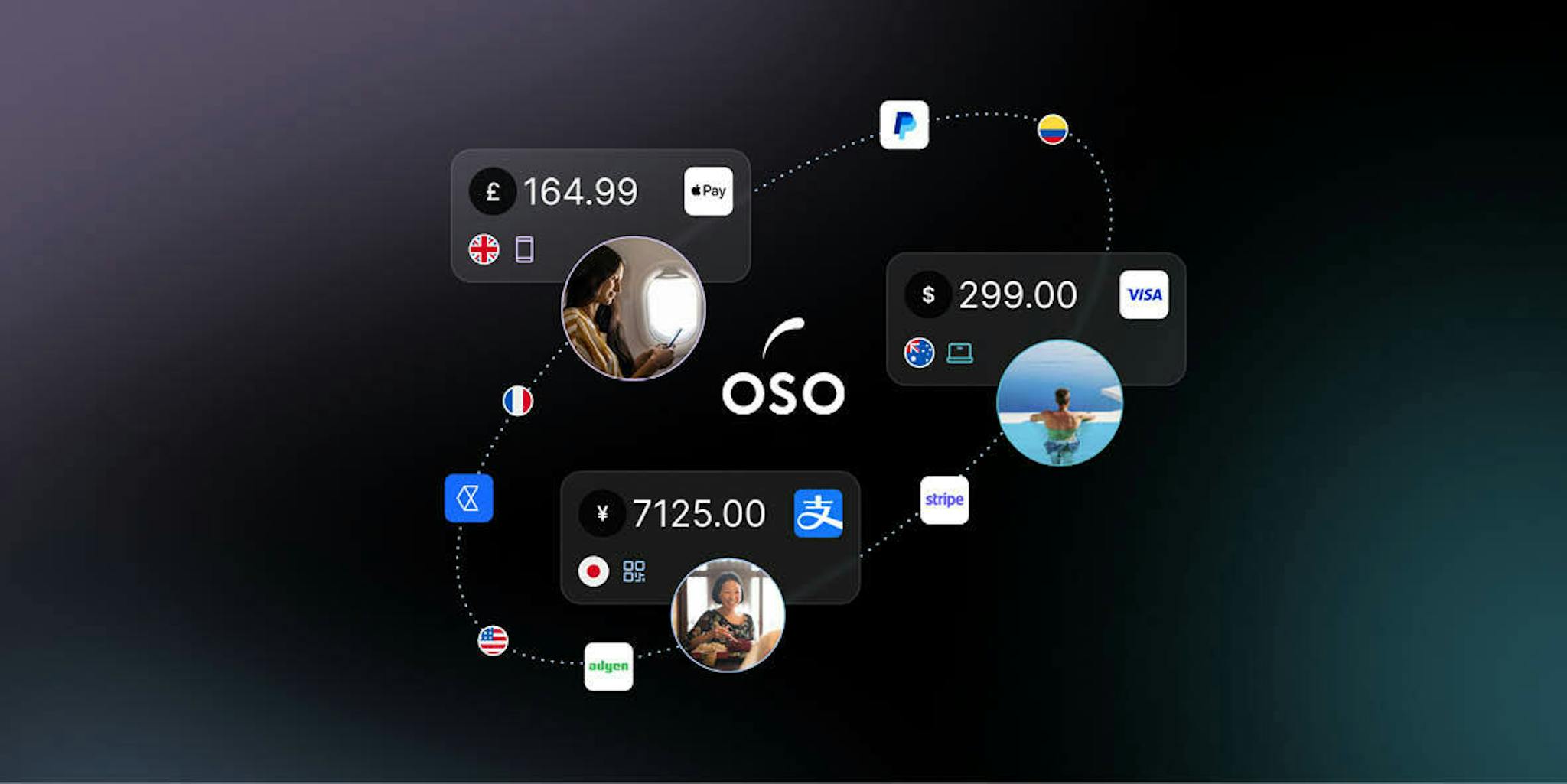By Tom Randklev and David Jelley
Blog
Too Many Systems, Too Little Control

While travel companies are posting record revenues, their payment operations largely remain an intricate web of fragmented systems that quietly drain profits through failed transactions, manual reconciliation, and mounting vendor complexity. Airlines juggle multiple payment providers with incompatible reporting standards, while hotels consistently watch their operating expenses outpace revenue growth year after year. This ‘patchwork approach’ to payments costs the industry billions annually – money that could flow directly to the bottom line with the right strategy. The solution isn't finding a new payment gateway or adding more payment service providers (PSPs); it's gaining unified control of the payment systems already in place through payment orchestration.
The travel industry stands at a curious crossroads. Airlines are projected to post record revenues of $979 billion in 2025, yet IATA forecasts profit margins will remain razor-thin at just 3.7%.
This pattern extends beyond aviation. In the U.S., hotel revenue per available room (RevPAR) increased by nearly 2% in 2024, with an additional 0.8% growth projected through 2026; however, gross operating profit is expected to remain flat.
Behind these squeezed margins lies a troubling (and expensive) reality:
Airlines spend over $20 billion annually on payment costs alone, representing approximately 3% of total revenue and consuming 78% of the industry's net profit. For hotels, the picture is equally concerning, with undistributed expenses (which include payment costs) rising by 2.3% last year, far outpacing revenue growth.
This isn't simply a matter of rising costs in competitive markets. The root cause runs much deeper, embedded in the way travel companies have built their payment infrastructure over the course of decades. Most organizations today operate patchwork payment ecosystems: legacy systems layered upon legacy systems, each serving business models that may no longer reflect current market realities.
These fragmented approaches create operational overhead that compounds year after year. Managing disparate vendors becomes increasingly burdensome, resulting in subpar customer experiences, particularly when handling cross-border payments or integrating new payment methods that modern travelers expect.
The proliferation of payment systems and solutions is creating challenges across the travel landscape. Our research shows airlines work with an average of 4.4 vendors across their payment processes. Low-cost carriers typically manage 3.72 vendors, while full-service carriers juggle 4.56 different providers. Each vendor has its own set of reporting standards, reconciliation processes, and integration requirements.
Complexity doesn't grow linearly with each additional vendor; it multiplies exponentially. When 45% of airlines cite complications in reporting and reconciliation processes as the primary barrier to making vendor changes – and 38% rank it as their foremost operational challenge, on par with route network expansion – it shows how any travel brand can become trapped by the very systems meant to serve them.
Traditional payment gateways and PSPs weren't designed for this type of multi-vendor setup. They emerged from simpler commerce models where a single provider could handle most payment needs. Travel's unique requirements, including sophisticated routing, multi-party settlements, and extensive regulatory compliance across markets that have grown over the years, stretch these systems beyond their intended capabilities.
Revenue leakage through failed payments represents one of the most direct costs of fragmented systems. When authorization rates drop due to poor routing decisions or inadequate fraud prevention, that lost revenue flows directly to competitors with better payment infrastructure.
The fraud challenge has intensified considerably, with 75.7% of travel sector merchants reporting an increase in fraud in 2024. This isn't just about direct losses; fraud protection requires sophisticated systems that can analyze payment patterns across multiple channels and markets simultaneously. Fragmented systems struggle to provide this comprehensive view.
Hidden costs multiply the visible payment expenses. Edgar, Dunn & Company and McKinsey identified $2 billion worth of short-term financing costs in 2019 alone, representing 9% of airlines' total payment costs. These financing needs arise partly from inefficient settlement processes and poor visibility of cash flow across multiple payment providers.
Manual reconciliation processes across disparate systems are time-consuming, costly, and prone to mistakes. Finance teams spend countless hours matching transactions across different reporting formats, while IT departments manage multiple integrations that require constant maintenance and updates.

Reporting and reconciliation headaches are only one challenge. Most patchwork payment solutions lack centralized dashboards, leaving executives without real-time visibility into payment performance across their entire operation. This creates a perilous blind spot in businesses where payment processing has a direct impact on both revenue and customer satisfaction.
The organizational impact extends beyond technology. Finance, IT, and commercial teams often work with different data sources, creating cross-departmental disconnects that slow decision-making precisely when agility is most crucial. Marketing teams launch campaigns without clear visibility into payment performance across different markets, while finance struggles to reconcile results from multiple providers using incompatible reporting standards.
Decision-making delays become inevitable when information remains fragmented and incomplete. Executives need consolidated views of payment performance to make strategic choices about market expansion, vendor relationships, and customer experience investments. Without this visibility, organizations react to problems rather than preventing them.
The solution requires more than adding another layer of technology to an already overburdened system. It demands a different approach that provides genuine control rather than additional overhead.
CellPoint Digital's new One Source Orchestration (OSO) platform is that solution. OSO serves as a central control point for authorization, routing, settlement, and reconciliation across more than 200 providers. This creates a unified control layer that simplifies operations while expanding capabilities. "OSO was purpose-built to drive profitability, efficiency, and revenue for travel merchants,” says Kristian Gjerding, CEO of CellPoint Digital. "In a complex payment environment, OSO offers simplicity that pays dividends.”
Real-time visibility becomes possible when all payment activity flows through a single platform. OSO provides unified reporting and analytics that give executives the comprehensive payment performance data needed for strategic decision-making. Payment flows can be optimized dynamically, reducing friction and improving conversion rates while ensuring consistent customer experiences from booking through settlement.
Smart payment routing and real-time fraud monitoring become achievable when systems can analyze patterns across all channels and providers simultaneously. OSO’s modular architecture supports these processes without adding operational overhead, providing travel brands with the speed and flexibility they need to modernize their payment strategies, reduce checkout friction, accelerate settlements, enhance customer experiences, and improve profitability.

McKinsey estimates that airlines could potentially capture $14 billion in value through strategic payment improvements, such as those offered by OSO. Aviation isn’t the only travel sector with a significant gap between current performance and what becomes possible with payment orchestration. Hotels, OTAs, transportation companies and other travel brands could all benefit from the profitability boost that comes with managing payments more effectively.
Early implementations suggest travel brands implementing OSO could see approval rate increases of 25% and fraud-related loss reductions of 40%. The platform handles the complicated, multi-party flows that characterize travel retailing and payments, and serves as an intelligent control layer that simplifies operations while expanding capabilities across every market and channel. These improvements compound over time as better data enables more sophisticated optimization strategies.
The travel industry's payment challenges are not inevitable complications of doing business. They're addressable issues that can be solved with the right technology. While airlines and hotels will continue to work with multiple payment providers, each adding layers of complexity and cost, they can improve performance by consolidating and controlling these relationships. One Source Orchestration provides that advantage and represents a strategic shift toward unified payment management, enabling recovery of lost revenue, reduction of operational overhead, and providing the real-time visibility executives need to make informed decisions. The opportunity is clear, and the technology exists to capture it.
To learn how CellPoint Digital's OSO platform can address your organization's specific payment challenges, contact our team today.


